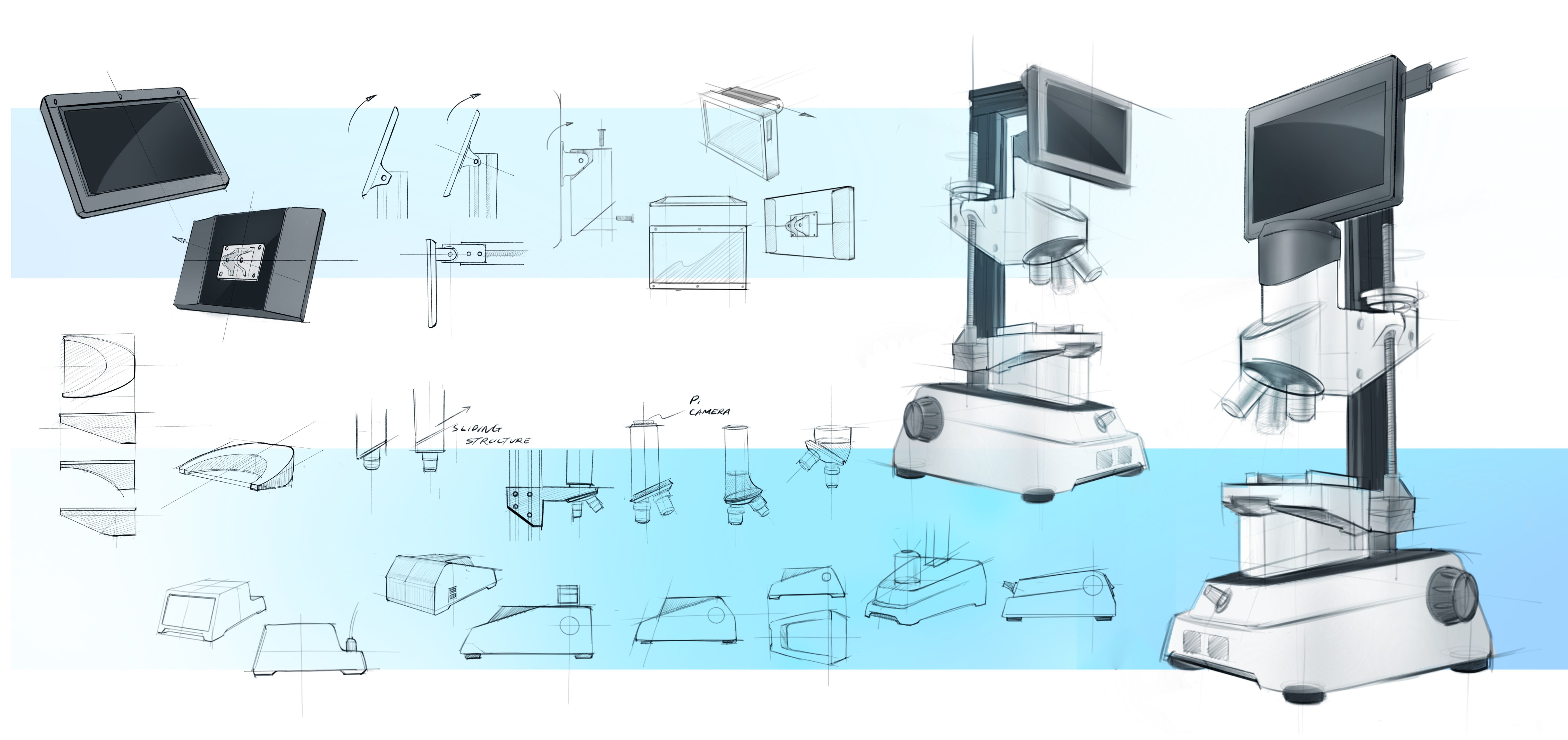
Designers
Joep van Stijn, Julia de Jong, Natalie Wochner, Patrick Busser, Renzo Vonk, Tian Yuan
Year
2021
Category
New Talent
Country
Netherlands
School
TU Delft
Teacher
Dr. ir. Jan Carel Diehl, ir. Wim Wijdeveld

Three questions to the team
What was the particular challenge in the project from a UX point of view?
Universities in Sub-Saharan Africa do not have the resources to provide enough medical devices for educational purposes. Even though we cut the price of the WeScope significantly, we cannot assume that each student will have its own. It will stay the norm for students to share one microscope. This is a problem with compound microscopes because only one student can look into the eyepiece at a time. The WeScope has an integrated screen which enables multiple people to look at the sample. To make teamwork and teaching easier, there is the possibility to connect to a projector. We are also planning to enable live stream of the image to student’s phones so everyone in the classroom can watch the sample at the same time.
What was your personal highlight in the development process? Was there an aha! moment, was there a low point?
In the beginning of the project we were planning to use PMMA (polymethyl methacrylate) as a basic structure because it is locally available and relatively cheap. We expected it to be more robust and longer-lasting than wooden sheets. However, due to its material properties, it turned out to be very sensitive to vibrations, which decreased the image quality significantly. This was an unexpected moment and we quickly needed an alternative solution. We came up with the idea to use aluminium profiles, which turned out to be very suitable for the WeScope in terms of stability and modularity.
Where do you see yourself and the project in the next five years?
In the coming year we plan to make some minor improvements to the WeScope. These include the optimization of heat dissipation and reduction of screws and 3D prints to reduce assembly time. Moreover, we would like to optimize the production processes and make repairability more intuitive. Further development includes the creation of a strategy for manufacturing and logistics. We hope to proceed with a small scale production in Kenya by 2022. Within five years we expect the WeScope to be widely available in Sub-Saharan African universities.


